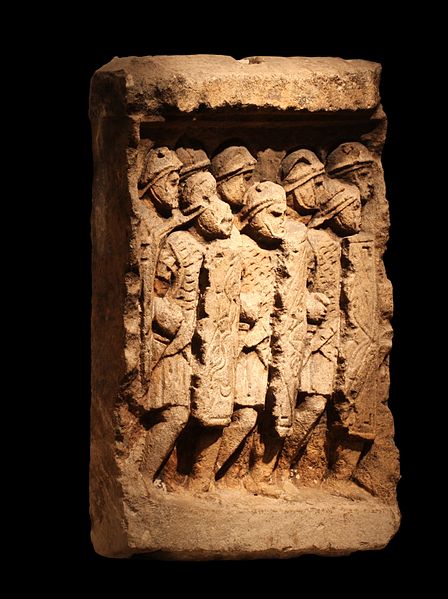Legio XIV Gemina was a legion of the Imperial Roman army, levied by Julius Caesar in 57 BC. The cognomen Gemina (Twinned) was added when the legion was combined with another understrength legion after the Battle of Actium. The cognomen Martia Victrix was added following their service in the Pannonian War c. AD 9 and the defeat of Boudicca in AD 61. The emblem of the legion was the Capricorn, as with many of the legions levied by Caesar.
Aureus minted in 193 by Septimius Severus, to celebrate XIIII Gemina Martia Victrix, the legion that proclaimed him emperor
The Imperial Roman army was the military land force of the Roman Empire from 27 BC to 476 AD, and the final incarnation in the long history of the Roman army. This period is sometimes split into the Principate and the Dominate (284–476) periods.
Statue of the founder-emperor Augustus in garb of military commander-in-chief
Imperial Roman legionaries in testudo formation, a relief from Glanum, a Roman town in what is now southern France that was inhabited from 27 BC to 260 AD
The Praetorians Relief, from the Arch of Claudius, Rome
Roman and Celtic cavalry in combat. Roman sarcophagus, Dallas Museum of Art, c. 190 A.D.





